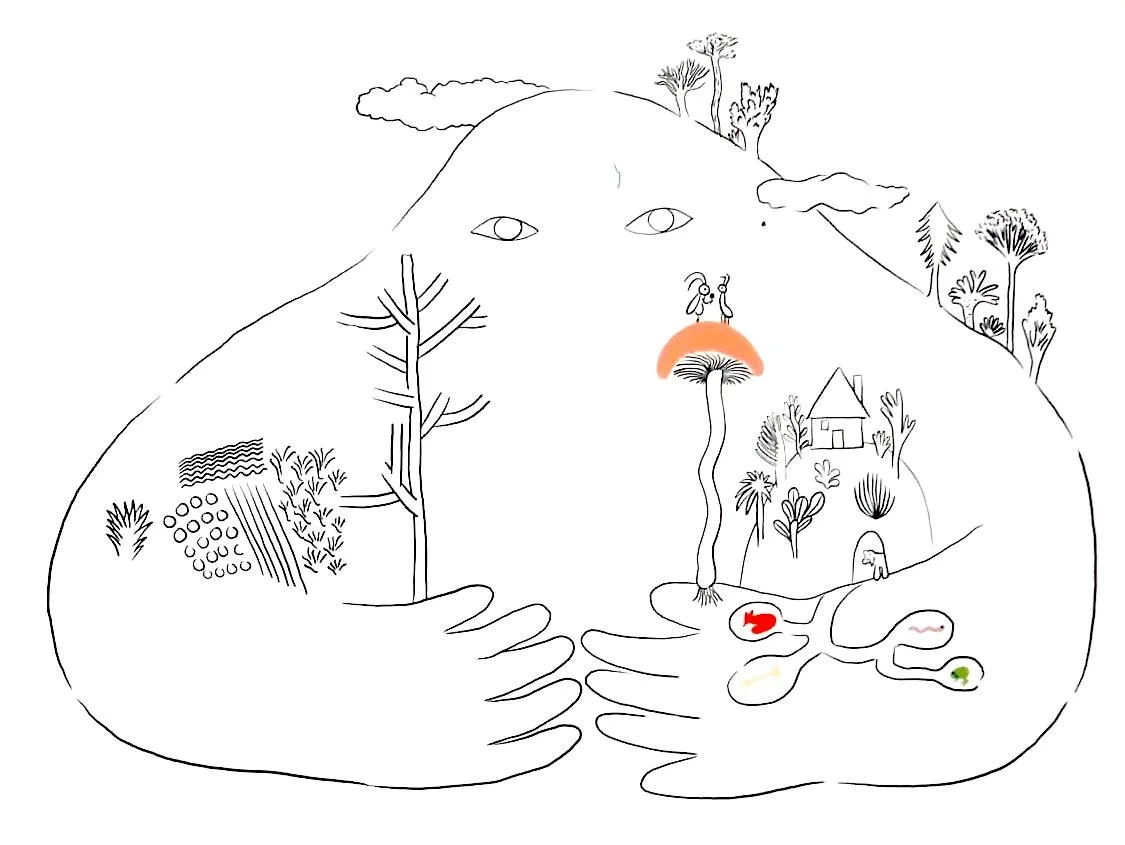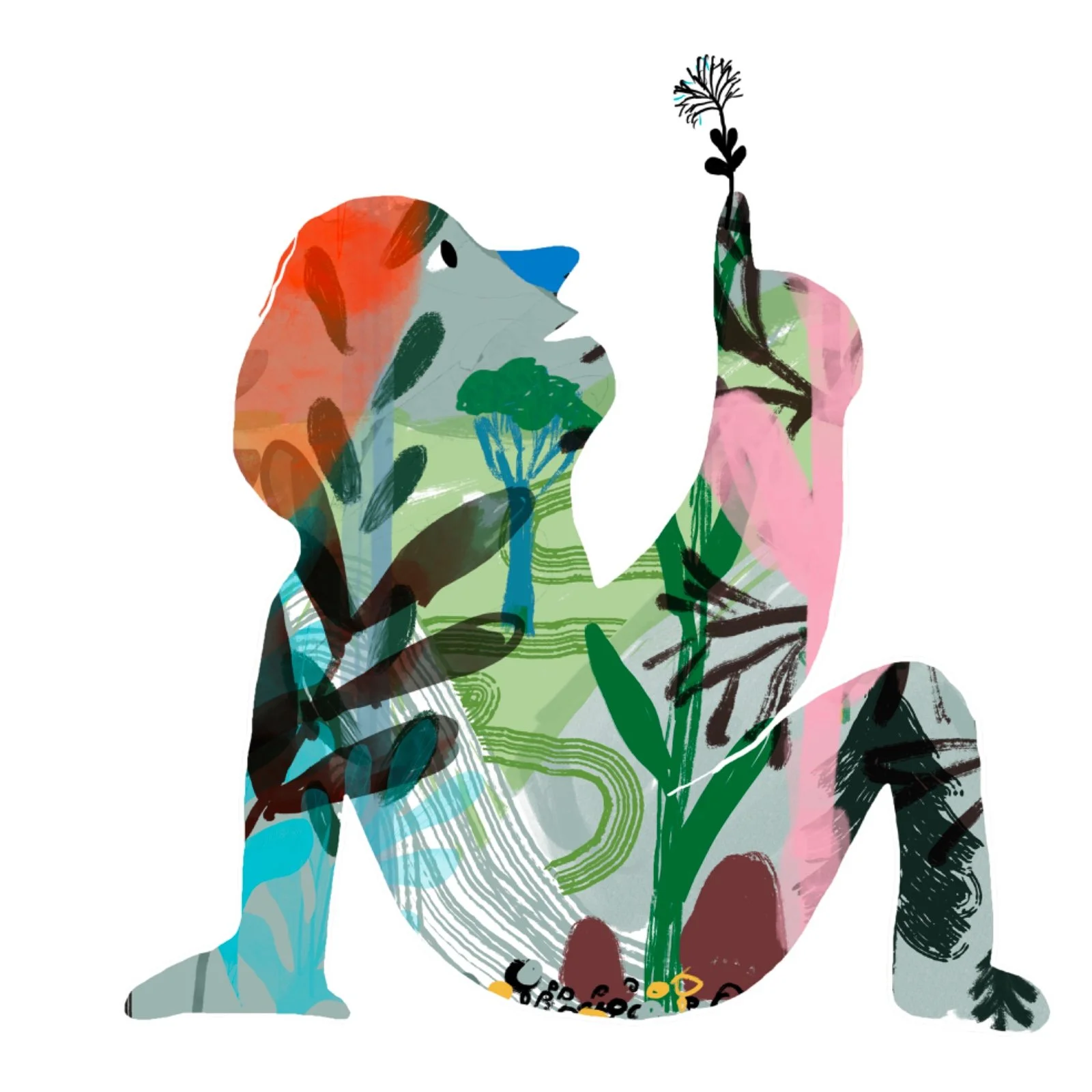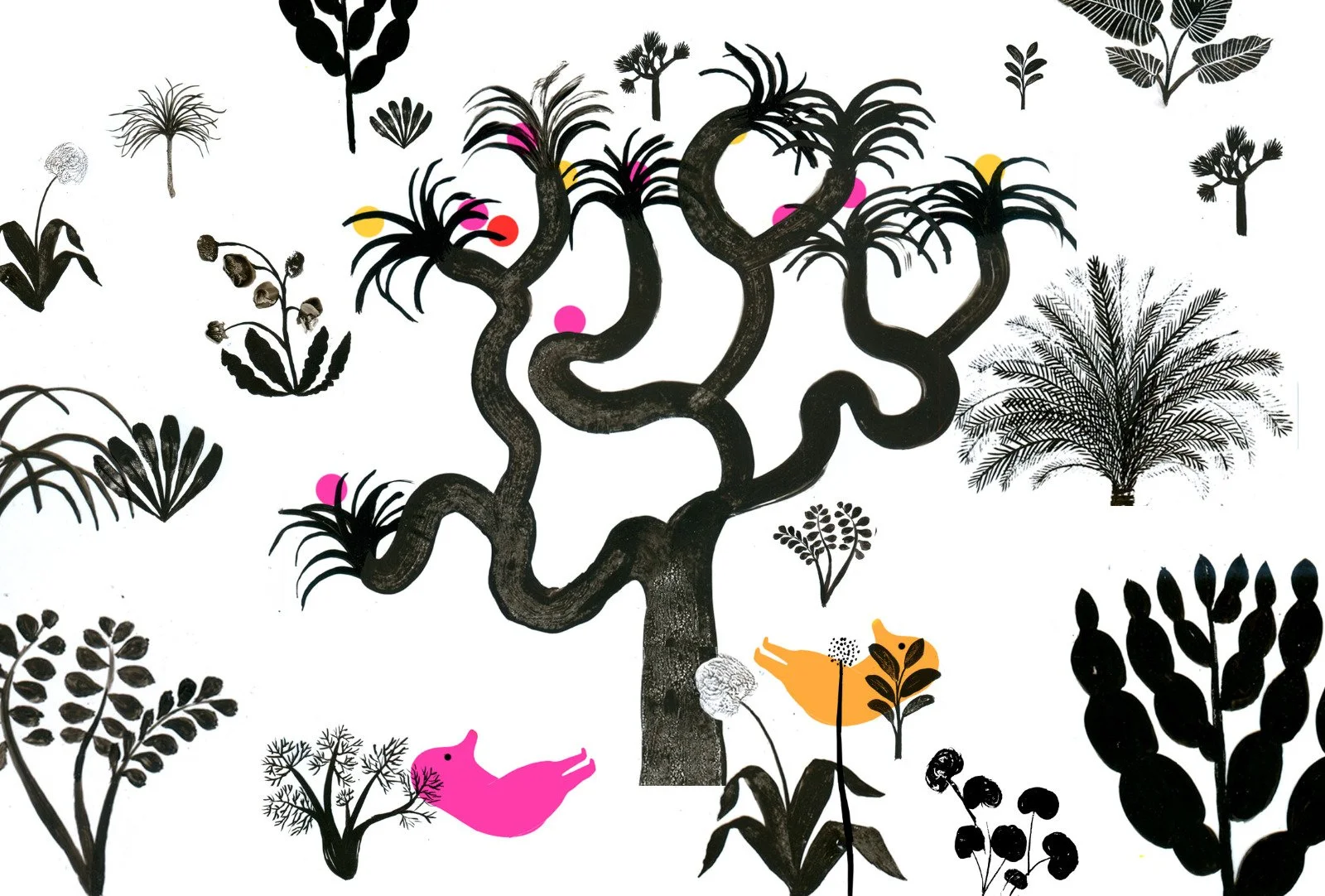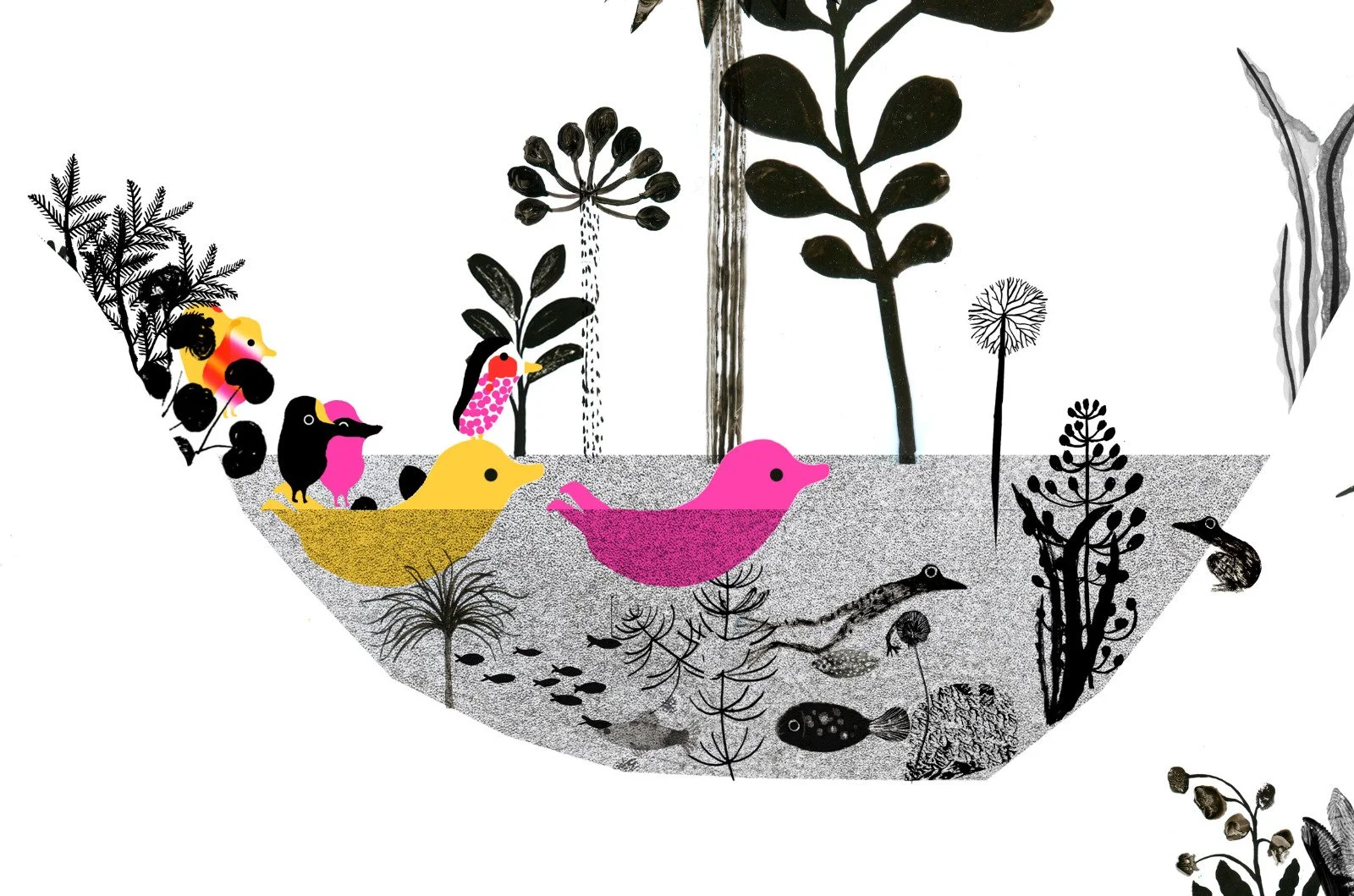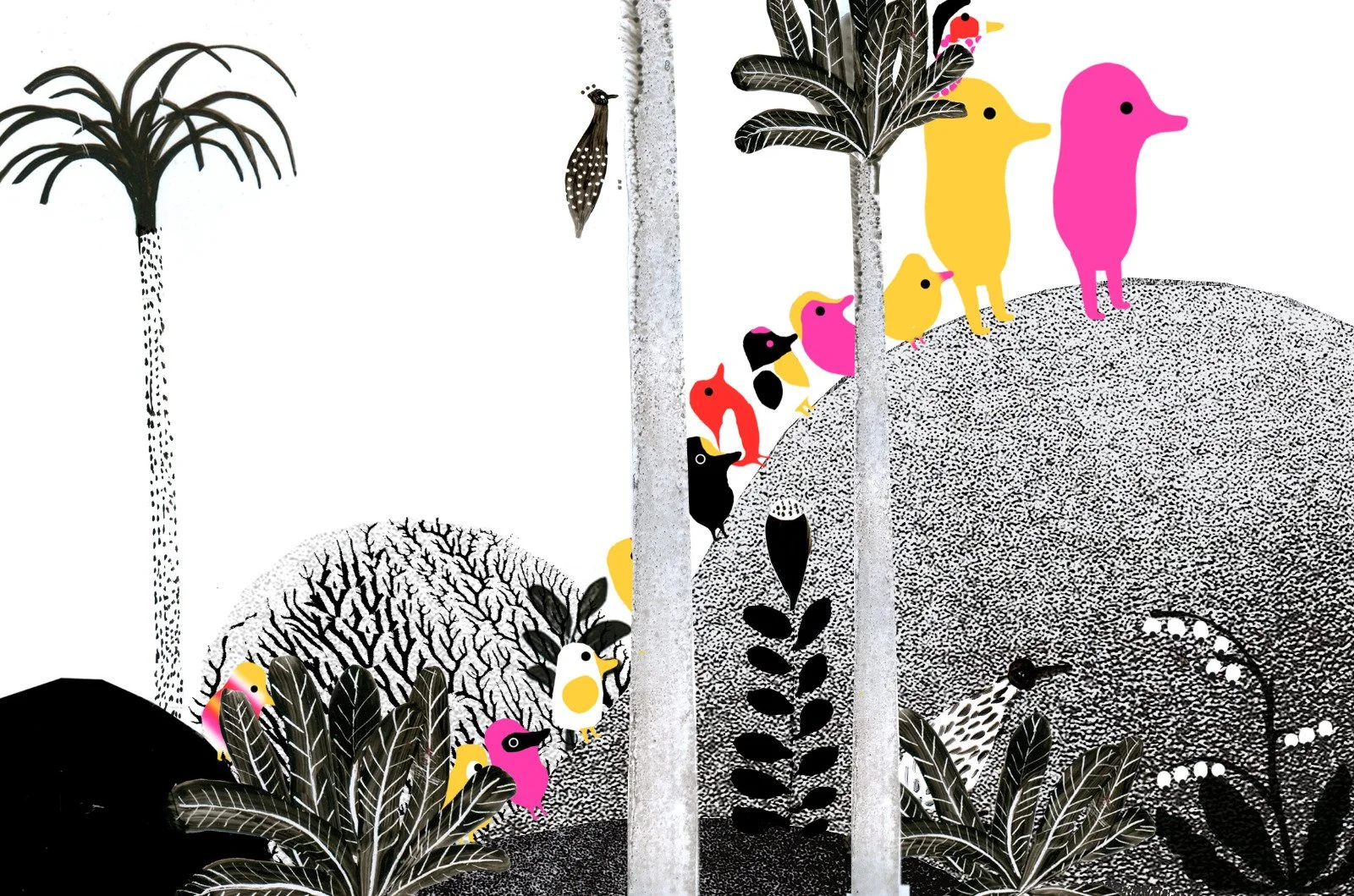A place for regenerative culture(s) and multispecies care
“Tomorrow
we shall have to think up signs, sketch a landscape, fabricate a plan
on the double page
of day and paper.
Tomorrow, we shall have to invent,
once more,
the reality of this world.”
Octavio Paz
Where we are coming from
Between 2015 and 2022, based in Berlin, Foresta Collective understood ourselves as an urban trans-disciplinary collective working at the intersection of ecologies, arts and education, with an intention to research the multifaceted notions of the 'ecological' and reframe how we relate to multispecies communities of life. Our activities revolved around the following areas (you can find more details to each available on this website):
Forestamorphosis
In 2022 we have set on a search for ‘spaces of the possible’, looking for ways to land with Foresta in a wilder place, to initiate the process of bringing critical reflection, research and symbolic practices of the past years closer to our lived life as a collective, to life-generating processes with the land, embracing the question at our origins — “how do we want to live as a multispecies collective?” — in very direct non-abstract materially-engaged ways, where "all flourishing is mutual", where our work can be shaped in, by and with places that lie outside current human-techno-urban imaginations.
Time of a long search and Forestamorphosis began......𓆱⚘𓃦𓍊𓋼𓍊𓅫↟𖤣𖥧𓆑....
In 2024 we became guardians of a 3 ha piece of land in Asturias, northern Spain.
Who and What are we becoming?
Since 1,5 years we are in a process of landing in this place, with an intention to cultivate and slowgrow (with) a space for regenerative culture(s), multispecies commons and symbiotic worlding.
Following our inquiry into how space becomes home we are reflecting, sensing, exchanging, as well as planning for more concrete projects for Foresta in this place to become home for plants (forest garden, land care practices, agroforestry), animals (the wild ones already living around here, as well as the ones that will be invited to become part of the project), humans (guests as well as permanent dwellers) and other life forms.
The vision is for Foresta to become not only a cultural and artistic work but also agricultural and learning space, that will include a farm, a food lab, a production pavillion, a tea house, a workshop space, a public garden, that will include a walk or a parkour, where artistic installations and micro-architectural structures will invite visitors to reconnect with the natural world. Contributing, on the one hand, to our vision of the world-of-many-worlds as habitable post-anthropocentric and re-enchanted, and on the other to regenerative food production, mutual learning, and sustainable cosmolocal economy.
In the next section we describe the areas of attenion and meaningful action that are the current and future focus for all activities of Foresta Collective.
Areas of Attention
Architecture(s) of Connection
How can architecture support multispecies conviviality and contribute to cultivation of ecological futures? In which ways can it invite us to develop more attentive and complex attitudes toward the vegetal and animal worlds, and frame our process of becoming more sensitive to other–than–human subjectivities? In which forms can regenerative architectures support building with the landscape and can they be a continuation of natural environment embraced by respectful intervention within that takes into account needs of diverse inhabitants? To respond to these inquiries we collaborate with spatial practitioners, supporting us in constructing low-carbon built environment prioritising circular design principles, plant-based regenerative materials, adopting to the local context, and facilitating more-than-human alliances. More info: www.foresta-collective.com/architectures-of-connection
Agroforestry
How can agricultural practices cultivate new possibilities for relating to the diverse communities of life and engage into landscape relations so that we can work as part of an ecosystem in harmony with natural processes? In our inquiry into working toward regenerative approaches to land care, cultivating Earth-based wisdom needed for the deep restoration, fostering biodiversity, serving the needs of multispecies inhabitants, we are in continuous apprenticeship from the forests. We are currently in the beginnings of planting a forest garden, putting into practice what we are learning from these complex symbiotic systems: to slow-grow food, as well as habitats for varieties of living beings, to facilitate conditions for biodiversity, to transfer passion for nature, and engage with many other ways in which forest cultures offer frameworks that enable change. More info: www.foresta-collective.com/forest-gardens
Foodscapes
Food is a portal for world-making and living into more grounded multispecies imaginaries for planetary habitability and vibrancy. So how do we build connections and enact reciprocity with and within foodscapes? What if we bring food back into the centre of our thinking? If food is a world-making practice, how do we strengthen regenerative food ecologies? What and who are included into those ecologies? How to lay the foundations for food sovereignty and what and who are included into the local? And how do we contemplate food also as poetry, friendship, memory, ceremony, energy, medicine?
We engage with food as both a cultural investigation as well as a practical vision for becoming a place for regenerative agriculture and food production. More info on these inquiries: www.foresta-collective.com/foodscapes
Relating to the Living
All areas of attention on our horizon, envisioning what a space for regenerative culture(s) could look like and how to make it vibrant, alive and sustainable, both in terms of sustaining diverse communities of life as well as taking care of the economic sustainability and longevity of the project, — unfold within a hopeful practice of multispecies world-making, towards potentialities for more reciprocal relationships of care, generosity, gratitude, symbiotic and sympoietic living, rooted in deconstruction of reductionist ideologies that are projected onto multispecies communities of life and may change our understanding of what it might mean to be human. You can read more about this long-term umbrella-inquiry within Foresta Collective here: www.foresta-collective.com/relating-to-the-living
Forms of Engagement
If you would like to engage with a project in some ways, at this point in time and/or in the future, there are several options to become part of this work. In terminology we use at Foresta Collective, you can become a dweller (someone who attends our formats, for example, takes part in the Seasonal Academy, or visits the place to go on a walk), or a companion (someone who helps to bring this vision into life in more direct ways, for example, becoming part of Foresta Colectiva association, coming for residencies, whether related to land care practices, artistic practices, or food-related practices, or supporting us financially, donating to the association).
Residencies
How can creative practices support imagining, birthing and growing futures that decolonize, rebuild and heal, as well as respond to the crises of disenchatment and loss of wonder as "injuries of modernity"? In what ways arts and other creative practices become support structures reconnected to the lived life and offer other ways to perceive multispecies worlds, to engage into affective primordial contact with them, to place value and to act?
Residencies hold space for intimate encounters with natural environments, through gestures of attunement, closeness and collective work, bringing together visible and invisible, ecological and metaphysical, poetic and practical, objects of daily use and artworks of symbolic meaning. Residencies unfold as temporary convivial experiences breathing life into a relational space where contemporary work is made collectively, claiming freedom and openness to experiment, making room for critical thinking and sensing, embracing heterogeneity and wanting the impossible. Open to diverse creative practitioners: such as art-, craft-, food-, land- and space- practitioners, and others sharing affection for forests and engaging with multispecies communities of life in their practice. More info: www.foresta-collective.com/thinking-with-a-garden
Seasonal Academy
Seasonal Academy is our learning format, that offers online (self-paced) and onsite (in person) learning experiences dedicated to ecologies of human and multispecies vibrancy and restoration of bonding with the living worlds. Committed to supporting persons from diverse walks of life, who wish to strengthen their work or develop an initiative rooted in forest imaginaries, interconnected ecosystemic thinking, attentiveness and care, responsive to each particular context. Seeded within embodied culture, thinking-through-making, and collective practice, Seasonal Academy offers you space and process to deepen into the circles of ecological sensitivity and develop long-term strategies for envisioning and realising your work, while taking care of yourself and your world(s). More info: www.foresta-collective.com/seasonal-academy
Multispecies Commons Walk
Contemplating ideas, potential meanings and practices for contemporary pilgrimage, we are envisioning a public pathway as part of the physical space at Foresta. This cultural pathway embedded into the landscape and strongly connected with local ecologies, will be a part of the educational and cultural activities at Foresta. This walk will offer visitors to engage into contemplative journey, connecting to the local landscape and its inhabitants. Communication partners on the walk will also be several site-specific artefacts, artistic objects or micro-architectural structures, that symbolically embody Foresta’s ecological and regenerative philosophy, communicate meaning, and support a more playful approach to understanding some of the key ideas and practices we are working with and towards.
Food production
Food is a conversation — between people and other species, seasons and landscape. Food is a tribute to the passing of time and shifting cycles, to attention and listening, to regeneration and care. Food is a relationship: agricultural, economical, cultural, multispecies. It’s a relationship between arts, crafts and technology — meeting in all the tools we use when planting, harvesting, eating and interacting with ingredients. Food is connection — between those who grow, those who are being grown, those who receive, and those who dispose. It’s a connection between societies economically and culturally, between human generations spoken through stories and ancestral recipes, between those eating together, and last but not least, a connection to one’s own embodied experience within the holobiont living body. Food is an expression of multispecies creativity and Earth’s biodiversity. It’s a path towards renewal of local economies and conviviality of place-based communities.
Food production will be part of the work Foresta Collective will be engaging with, growing and harvesting from a forest garden, experimenting with perennial plants cooking and offering dinners at our food lab, as well as producing tea, infusions, snacks, and other food-forest related products that are now in the process of development. More info: www.foresta-collective.com/foodscapes
School without Walls
School without Walls is our long-term format for and with children, dedicated to ecologically, socially and personally sustainable futures. It has been existing in an urban setting of Berlin as an aesthetic research expedition that explores natural and cultural ecologies and that will also metamorphosize as Foresta will become more rooted on the land. Unfolding in a direct relationship with the world around, this School’s vision is to nurture perception and awareness beyond a reductionist view of nature, to expand sensitivity and ways of listening to multispecies communities of life, through personal and collective storytelling and artistic thinking and making. More info: www.foresta-collective.com/workshops-foresta-kids
Eco-tourism
We understand eco-tourism as a way to invite temporary dwellers into the space, to offer a possibility to experience the project not just during a short visit, but staying for a while.
We are still in the process of research and experimentation with the questions of form that this form of agro-tourism will take. How can structures have least possible impact on the terrain? Can they welcome interspecies living spaces, while respecting privacy of all at the same time?
This possibility to engage with the place is also a way to contribute to the economy of the project and its long-term sustainability.
Financial Support
Thank you for considering supporting our work. Just write us an email at flow.slow.grow @ gmail.com and we will be in touch as soon as we can.
Illustration: Violeta Lopiz




